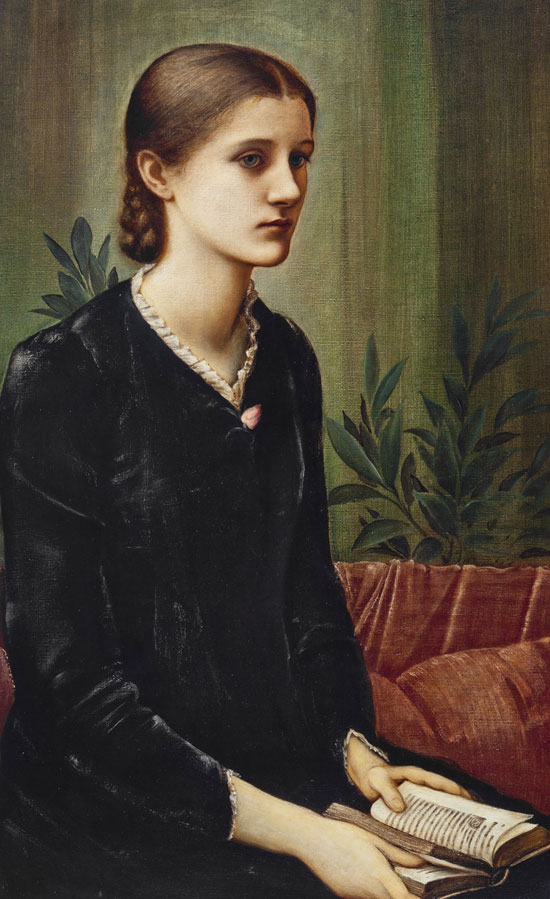
Another portrait painted this year, that of Miss Fitzgerald, a young American girl. The art of portraiture he [Burne-Jones] considered very seriously from the point of what “expression” was allowable–a question that he had settled with regard to his imaginative pictures at an early date. Speaking of this in later years he said:
“Of course my faces have no expression in the sense in which people use the word. How should they have any? They are not portraits of people in paroxysms–paroxysms of terror, hatred, benevolence, desire, avarice, veneration, and all the ‘passions’ and ’emotions’ that Le Brun and that kind of person find so magnifique in Raphael’s later work–mostly painted by his pupils and assistants by the way. It is Winckelmann, isn’t it, who says that when you come to the age of expression in Greek art you have come to the age of decadence? I don’t remember how or where it is said, but of course it is true–can’t be otherwise in the nature of things.”
“Portraiture,” he also said, “may be great art. There is a sense, indeed, in which it is perhaps the greatest art of any. And portraiture involves expression. Quite true, but expression of what? Of a passion, an emotion, a mood? Certainly not. Paint a man or woman with the damned ‘pleasing expression’, or even the ‘charmingly spontaneous’ so dear to the ‘photographic artist’, and you see at once that the thing is a mask, as silly as the old tragic and comic mask. The only expression allowable in great portraiture is the expression of character and moral quality, not of anything temporary, fleeting, accidental. Apart from portraiture you don’t want even so much, or very seldom: in fact you only want types, symbols, suggestions. The moment you give what people call expression, you destroy the typical character of heads and degrade them into portraits which stand for nothing.”He gave as an illustration the instance of the three Queens he was then painting in the Avalon picture–Queen Morgan le Fay, the Queen Northgalis, and the Queen of the Waste Lands.
“They are queens of an undying mystery,” he said, “and their names are Lamentation and Mourning and Woe. A little more expression and they would neither be queens nor mysteries nor symbols, but just–not to mention baser names in their presence–Augusta, Esmeralda, and Dolores, considerably overcome by a recent domestic bereavement. And that, my dear, as you are aware, is not what I mean: but put in the ‘expression’ these good people clamour for, and there is where you would be landed.”
Memorials of Edward Burne-Jones, vol. II, Georgiana Burne-Jones



Thanks for this post